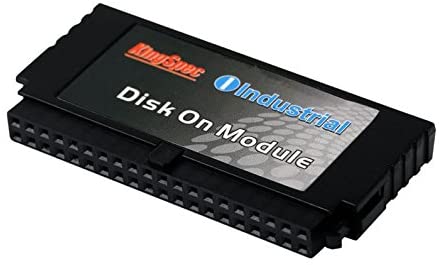Disk On Module: Difference between revisions
Created page with "Disk on a Module or simply and more commonly Disk On Module (DOM) is a flash memory chip module that provides solid state storage and connects to an IDE (Integrated Drive Elec..." |
mNo edit summary |
||
| (One intermediate revision by the same user not shown) | |||
| Line 1: | Line 1: | ||
Disk on a Module or simply and more commonly Disk On Module (DOM) is a flash memory chip module that provides solid state storage and connects to an IDE (Integrated Drive Electronics) connector. | Disk on Memory, Disk on a Module or simply and more commonly '''Disk On Module (DOM)''' is a flash memory chip module that provides solid state storage and connects to an IDE (Integrated Drive Electronics) connector. | ||
An IDE DOM is a small flash storage module which plugs directly to the IDE connector of the host motherboard. The DOM emulates a HDD, so the host operating system sees no difference reading and writing from an IDE DOM or rotating HDD. | |||
[[File:wiki-disk-on-module.jpg]] | |||
A disk-on-a-module (DOM) is a flash drive with either 40/44-pin Parallel ATA (PATA) or SATA interface, intended to be plugged directly into the motherboard and used as a computer hard disk drive (HDD). DOM devices emulate a traditional hard disk drive, resulting in no need for special drivers or other specific operating system support. DOMs are usually used in embedded systems, which are often deployed in harsh environments where mechanical HDDs would simply fail, or in thin clients because of small size, low power consumption and silent operation. | |||
Traditional HDDs and optical drives are designed around the rotating platter(s) or optical disc along with the spindle motor inside. If an SSD is made up of various interconnected integrated circuits (ICs) and an interface connector, then its shape is no longer limited to the shape of rotating media drives. Some solid state storage solutions come in a larger chassis that may even be a rack-mount form factor with numerous SSDs inside. The Disk On Module or DOM form factor need only be shaped to accommodate the 40/44-pin connector and with a body cavity large enough to facilitate the internal memory chips, thus resulting in a very small total size as compared to a traditional mechanical hard drive. | |||
[[Category:Solid_State_Media]] | [[Category:Solid_State_Media]] | ||
[[Category:Computer_Technology]] | [[Category:Computer_Technology]] | ||
[[Category:Linux]] | [[Category:Linux]] | ||
Latest revision as of 20:10, 24 November 2020
Disk on Memory, Disk on a Module or simply and more commonly Disk On Module (DOM) is a flash memory chip module that provides solid state storage and connects to an IDE (Integrated Drive Electronics) connector.
An IDE DOM is a small flash storage module which plugs directly to the IDE connector of the host motherboard. The DOM emulates a HDD, so the host operating system sees no difference reading and writing from an IDE DOM or rotating HDD.
A disk-on-a-module (DOM) is a flash drive with either 40/44-pin Parallel ATA (PATA) or SATA interface, intended to be plugged directly into the motherboard and used as a computer hard disk drive (HDD). DOM devices emulate a traditional hard disk drive, resulting in no need for special drivers or other specific operating system support. DOMs are usually used in embedded systems, which are often deployed in harsh environments where mechanical HDDs would simply fail, or in thin clients because of small size, low power consumption and silent operation.
Traditional HDDs and optical drives are designed around the rotating platter(s) or optical disc along with the spindle motor inside. If an SSD is made up of various interconnected integrated circuits (ICs) and an interface connector, then its shape is no longer limited to the shape of rotating media drives. Some solid state storage solutions come in a larger chassis that may even be a rack-mount form factor with numerous SSDs inside. The Disk On Module or DOM form factor need only be shaped to accommodate the 40/44-pin connector and with a body cavity large enough to facilitate the internal memory chips, thus resulting in a very small total size as compared to a traditional mechanical hard drive.
